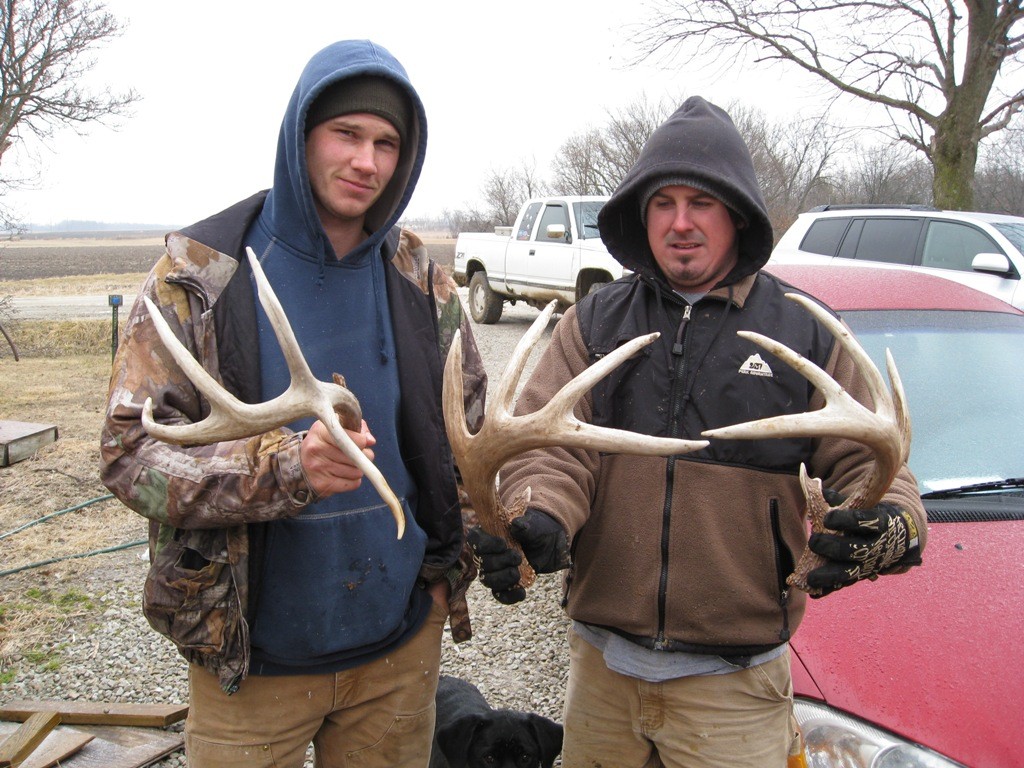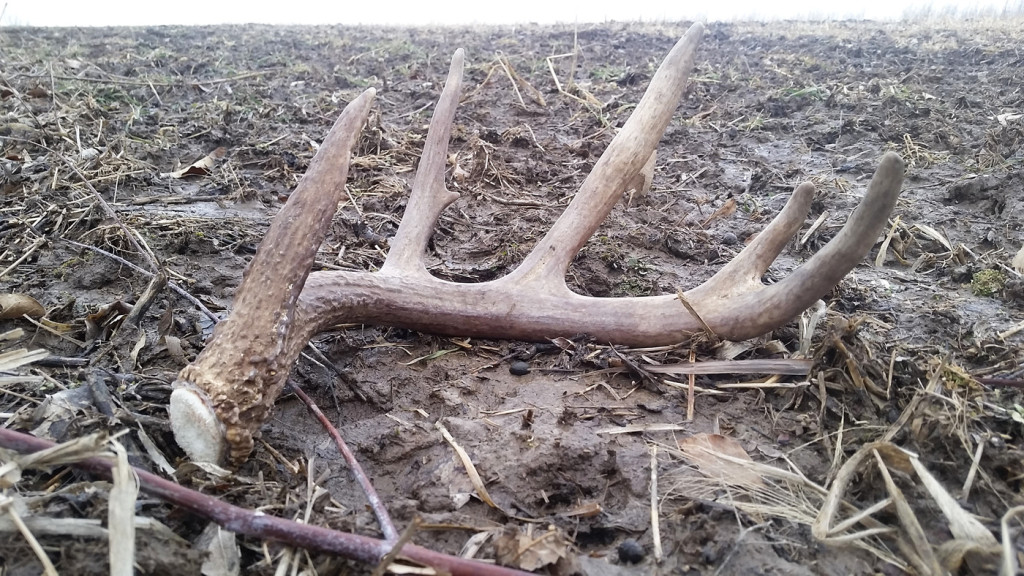Shed Antler Finding Tips and Techniques!
Here we are — it’s late February already. Where has the time gone? For some of you — those who have had, and are yet having, a harsh winter — maybe the time hasn’t seemed to fly by like it has here in Iowa for me. It seems like this winter is moving right along. We had an “easy” December, with much warmer weather than usual. And, although, temperatures have gone a bit back to normal since December, we’ve still had a pretty easy winter thus far.
But, even with pretty mild conditions thus far, there are a lot of antlers laying on the ground right now!
For many years, I’ve tried to figure out some sort of predictor for when the best time to look for shed deer antlers really is — when do most of the shed antlers hit the ground? It varies from year to year.
When deer are stressed — such as with an early onset of winter conditions, with heavy snow and cold, right after the deer have finished with the rut — lots of antlers are shed early. That means the month of January in the Midwest. During mild winters, it’s just the opposite, more antlers are shed later in the winter and an more “evenly” shed over an extended time throughout the winter — say from around Christmas time through early April (yes, that late!).
During particularly mild years, I have seen several bucks with antlers all through April!
During normal years, those years were wintertime conditions are basically what one would call comparable to a long term average as far as snow levels and temperatures go, about half of the sheds will be on the ground on February 15th in Iowa. This seems to have been a pretty accurate predictor date over the last 15 years in southern Iowa where I’ve been observing deer.
Of course, not only does the weather impact when deer will drop their antlers so does genetics. Some deer drop early and some drop late – most every year that falls into that “average winter” category for the area that you are in. Weather conditions and other factors that impact deer stress will move times individual deer actually do shed their antlers one way or the other, respectively.
Okay – so we know there are antlers on the ground, right now.
Where to look?
I guy I met one time in southern Iowa had a local reputation as the “shed antler king” and he told me his secrets to finding over 100 sheds most every year.
- First – strap on your boots, ‘cause you’ll be doing a bunch of walking! Of course, these days people use ATV’s more and more to cover ground but you’ll still need to do a lot of walking if you expect to find lots of shed antlers. Even when going slowly on an ATV, it can be difficult to see antlers. If you aren’t finding them at the speed you are going, it’s probably best to slow down!
- Scan all around you with every step but focus your eye’s attention mostly at a pretty step downward level, focusing out no more than 10 yards or so. Like trying to find a flock of ducks in the sky – even though they may be “right there” for all to see, they can be oblivious to the person who is looking at the wrong angle to the sky. If you try to see too much, sometimes you see too little. Look ahead as you go but focus mostly in a 10 yard circle just out from your feet as you move along.
- Look in the open! This is a big one. When I asked the “antler king” where he looked specifically to find most of his sheds, was it in the thick bedding cover, the mostly open night-time feeding areas, or within the connecting trails? His answer?
Stay in the open! I hardly find anything in the thick stuff because it’s just too hard to see them in all that cover. The bulk of my sheds are found right out laying in wide open areas where deer feed at night.
Talk about interesting news!
Up to that point in my shed antler seeking efforts, I’d been focusing more on the thick stuff! (I admit that I still find it hard to resist shed hunting in those thick bedding areas, because I know bucks spend so much time there – and I do find sheds in those areas! However, “the antler king” is correct – it’s much easier to find antlers laying in the open feeding zones!)
Search areas where deer are feeding when you believe they are dropping most of their antlers.
That is, if you are having harsh winter conditions in January and you think deer are really shedding antlers then, pay attention to where the bulk of the deer are feeding for when it’s time to go look for sheds. Often, in my case, by the time I’d start looking for sheds in late February or so, I’d be searching deer feeding areas, but I might be focusing on areas there deer were currently feeding in, instead of where they were feeding at the time most of the sheds were hitting the ground!
Therefore, it’s important to pay attention to where the deer are feeding when you believe most of the local deer are shedding antlers and then search in those areas! During mild winters, it can be more challenging to pinpoint certain areas because deer food may be more widespread, and bucks tend to shed antlers over a more extended period during mild winters, so those years can be more challenging to find antlers.
Additional tips/pointers:
Some folks like clouds and some like the sun, for shed hunting.
I prefer cloudy days.
Sometimes the sun will glare off an antler tine or beam and make it easier to find on sunny days, but half the time, at least it seems, the sun is in your eye’s making it hard to see on those days. Cloudy days even out the tones and there is less color on the ground but it seems like it makes it easier on the eye’s and once you sort of “train your eyes” to key on antler shapes as you go they then tend to stand out. Some people like the sunny days best though! It’s a personal call. I usually don’t select the days by the amount of sun but rather by the amount of open time I have on my calendar! I suspect I’m probably not the only one that does that….
Walk…walk…and then walk some more!
You almost can’t cover too much ground when looking for sheds. I say “almost” because you definitely can if you are going too fast! Slow down to find more buck antlers! Zig-zag your areas to cover them well. And don’t give up! Remember, during the wintertime period deer are grouped up – and bucks tend to group off by themselves. Oftentimes, these bucks groups will be just adjacent where the bulk of the does may be feeding, but oftentimes, as well, buck groups are using a completely different area and food source!
That is why covering so much ground – but covering it well – is so important for finding maximum numbers of shed antlers. There can be a lot of “dead time” between spots and finding sheds and then all of the sudden you find four or five antlers in a couple of minutes – BINGO! That’s when you’ve likely stumbled upon a core area for a group of wintertime bucks. It may seem obvious but be sure to slow down when you find these areas and really scour them in detail.
I hope these thoughts help you in your shed hunting this year! Let us know how you do!



